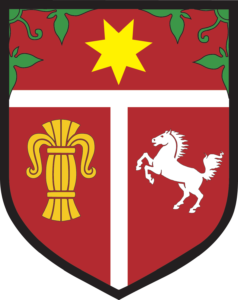Head of State: Ralmir, 23rd King of Holrothâm, House of Raanmir
Government: Hereditary autocracy, with feudal lords over eighteen provinces
Capital: Phanir
Population: 2,428,000 – Human 90% (Essant 85%, Glynn 15%), other 10% (dwarves, halflings)
Languages: Essant, Glynnish, Dale, dwarven, common
Military profile: Males; ~1.5% standing (36,000), ~15% wartime (360,000); current state: standing
Industries: Agriculture, fishing, livestock, trade, winemaking
Wide, fertile plains cover most of this large coastal nation. Its northern neighbor is Dalenwyr, and its southern and western boundaries are the Errigan Sea. To the east lays the southern end of the Vitgar Mountains and the nations of Ardun and Kouzerad. The islands of Manâth and Milbanâth in the west, as well as Abêth and Târik in the Bathân Gulf, are also lands claimed by Holrothâm. The climate in the southern end of the Holrâm Peninsula as well as the Island of Târik is mild desert. The rest of the nation lies in the temperate climate zone. Most of the country is very rural, with all arable land used to its fullest potential.
Holrothâm was settled by the Essant people, who came to the western shores of the continent nearly 800 years ago. They initially settled the rocky islands of Manâth and Milbanâth, and as their population grew, and more Essant arrived from their homeland, the population moved to the mainland. Soon the nation expanded to become the largest in Margant. The Essant people brought their grains to this new world and cultivated them with great success. Currently they have the largest yield of grain crops in all Margant, which affords Holrothâm great trade power. Holrothâm exports 45 to 50% of its grain output, most of it going to Tibbenlan, Ardun and Fallmeade. Its capital, Phanir, is located on the western coast, and is a heavily fortified port city and large trade hub, with a population of approximately 37,300.
King Ralmir can trace his lineage all the way back to the House of Raanmir, the first Essant house in Margant. The king is a benevolent ruler of who takes a very pragmatic approach to life, seeking balance in all things. He has trusted relations with his lords, some of which are of Glynn lineage. He relies on a bureaucracy of relatives and trusted advisors to help with trade negotiations and general operations of the government. The king resides in the capital, on a hilltop that overlooks the Errigan Sea.
Holrothâm has always maintained a strong military tradition. It currently boasts a highly-trained and armored cavalry of over 5,000 soldiers and barded horses. It keeps a standing host of approximately 36,000 soldiers who are lightly armored and can move fast. The king’s son, Prince Ralaamir, oversees the cavalry, and the king’s nephew, Prince Rolin, heads the infantry forces.
The strongest and fastest horses in Margant are bred in Holrothâm, with most of the breeding and training done in the southern province of Holrâm, which is the Essant word for ‘horse’. While horses existed on Margant before the arrival of humans, the Essant people brought a different species with them, the hagalâs, which is larger and stronger. The current line of horses bred by Holrothâm is a mix of the hagalâs and the rochmir, the smaller and swifter wild horses native to southern Margant.
The heraldic symbols on the Holrothâm crest mean a great deal to its people. The seven-pointed star represents the seven gods that the Essant people worship, and this motif is repeated throughout Essant culture, in military and private life. The wheat sheaf represents the great strength in the country’s agriculture. The white horse represents the strong tradition the Essant people maintain with the horse. And finally, the ivy branches that adorn the top of their crest indicate Holrothâm’s membership in the Rundûl League.

